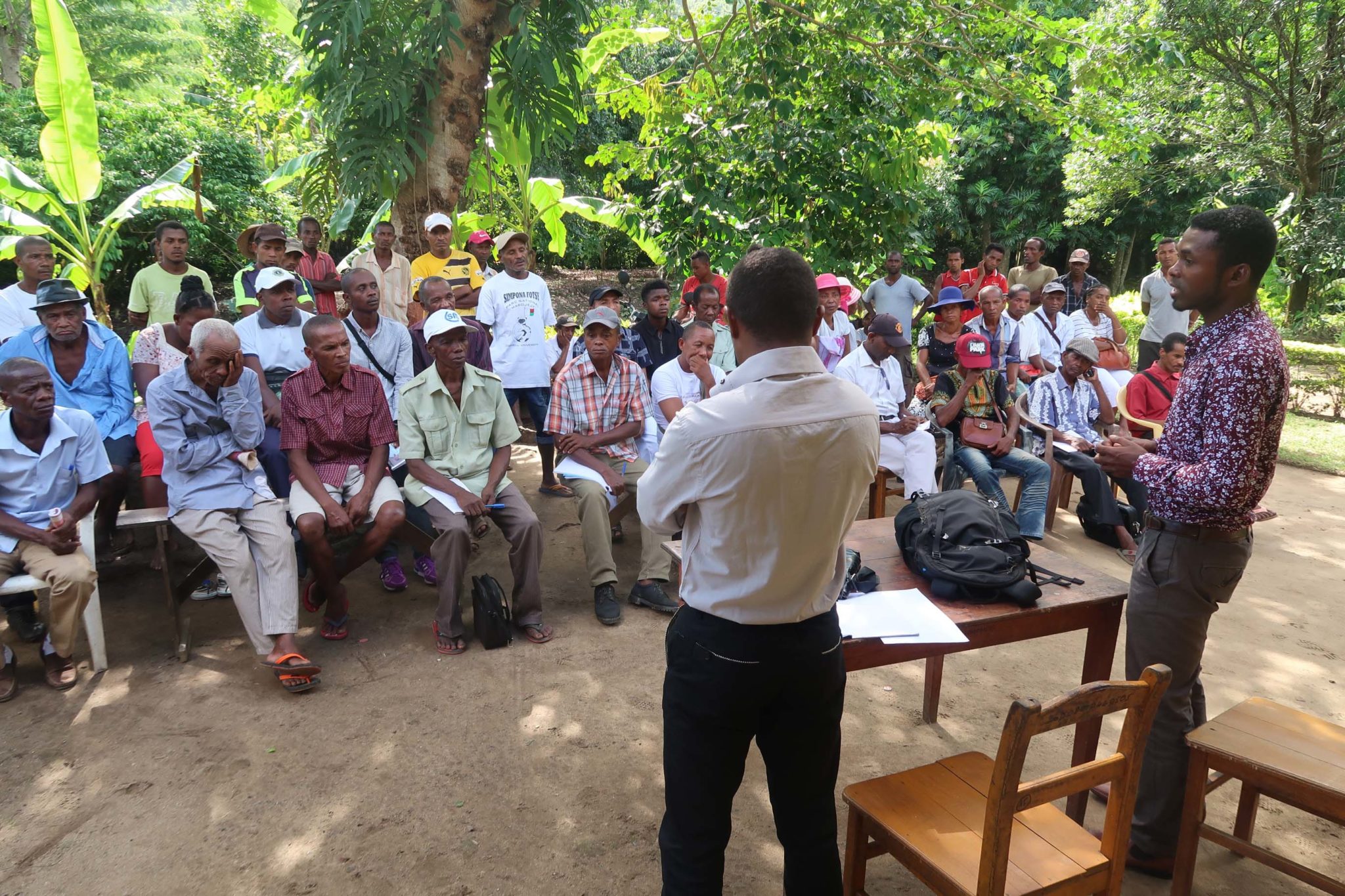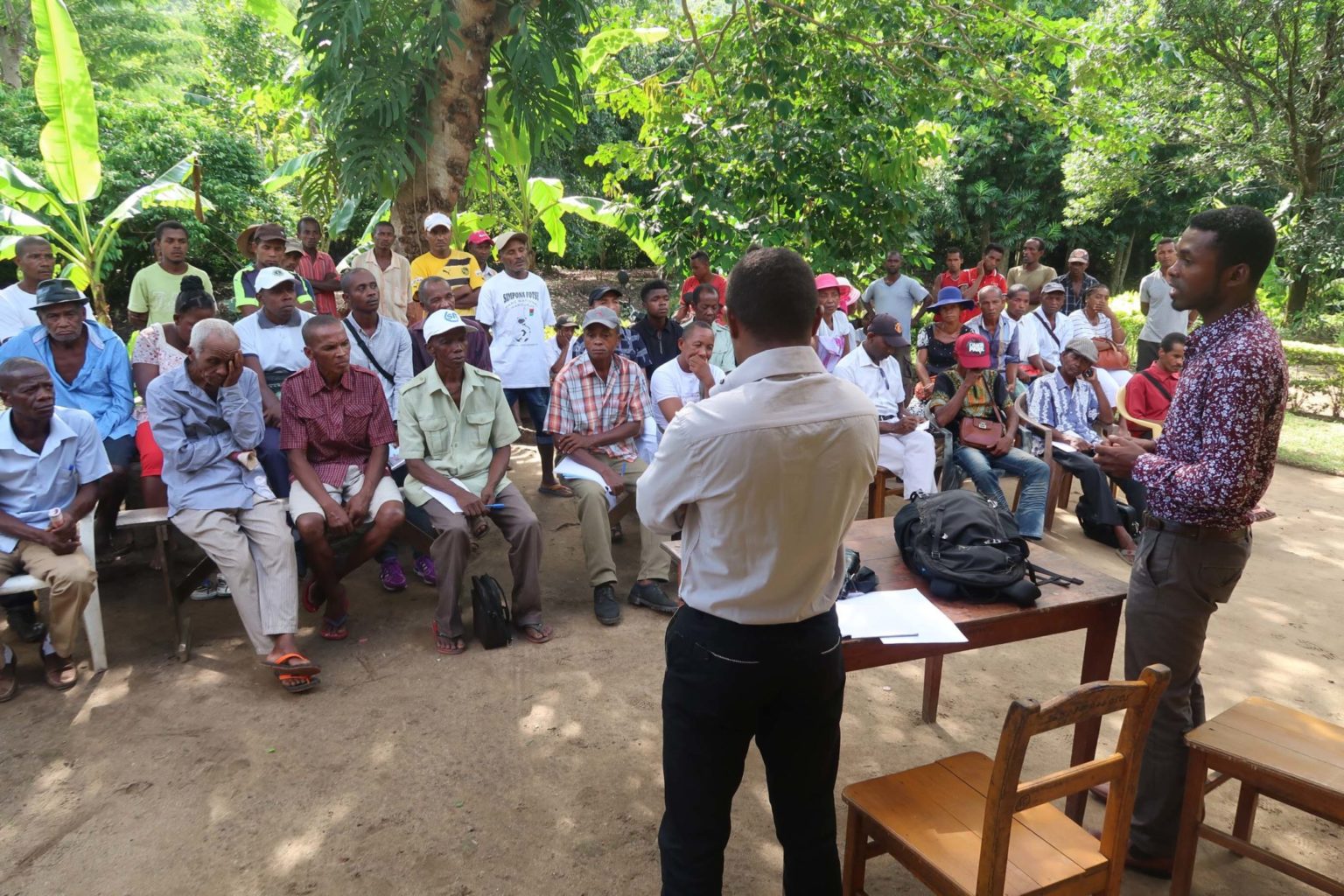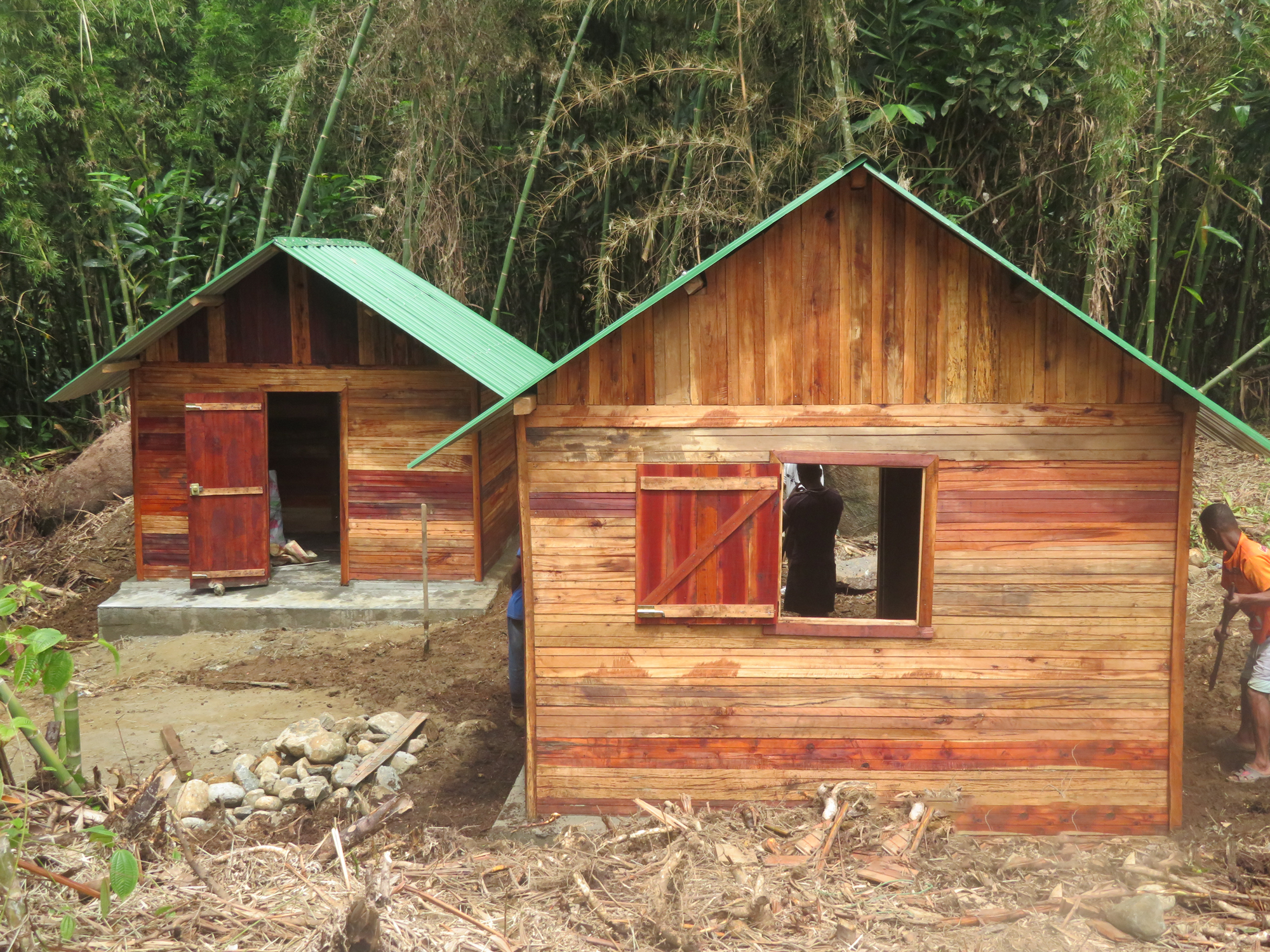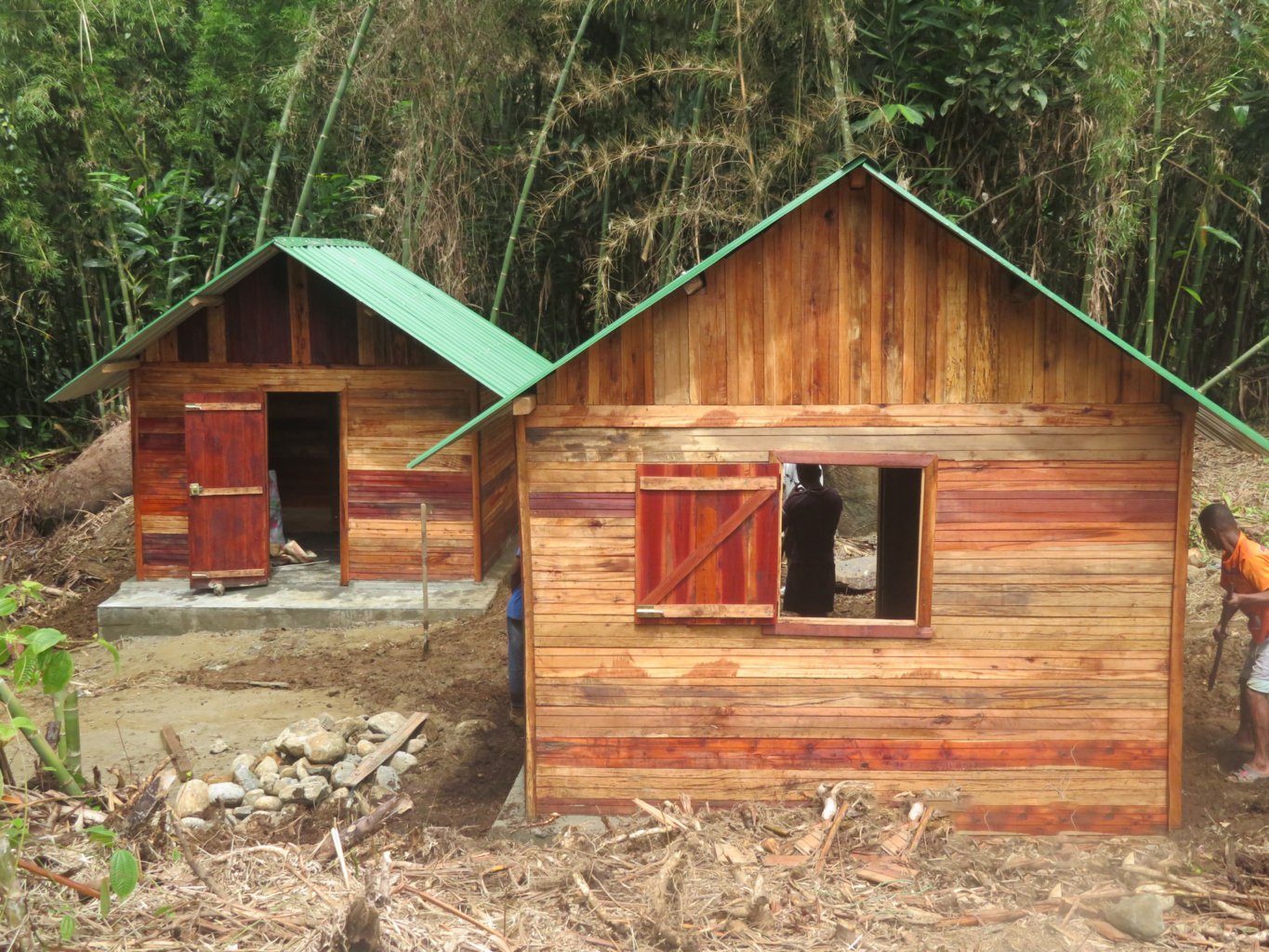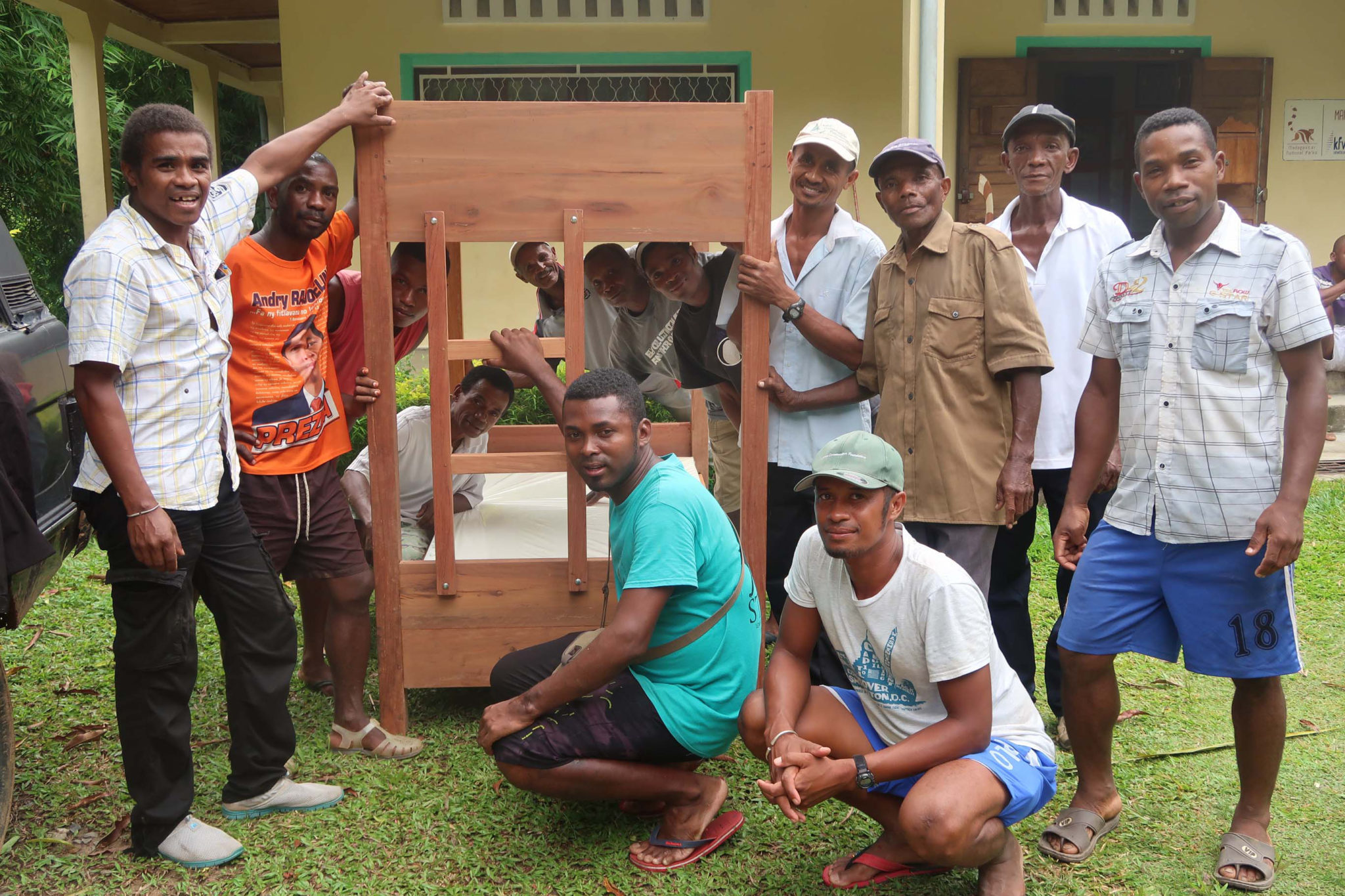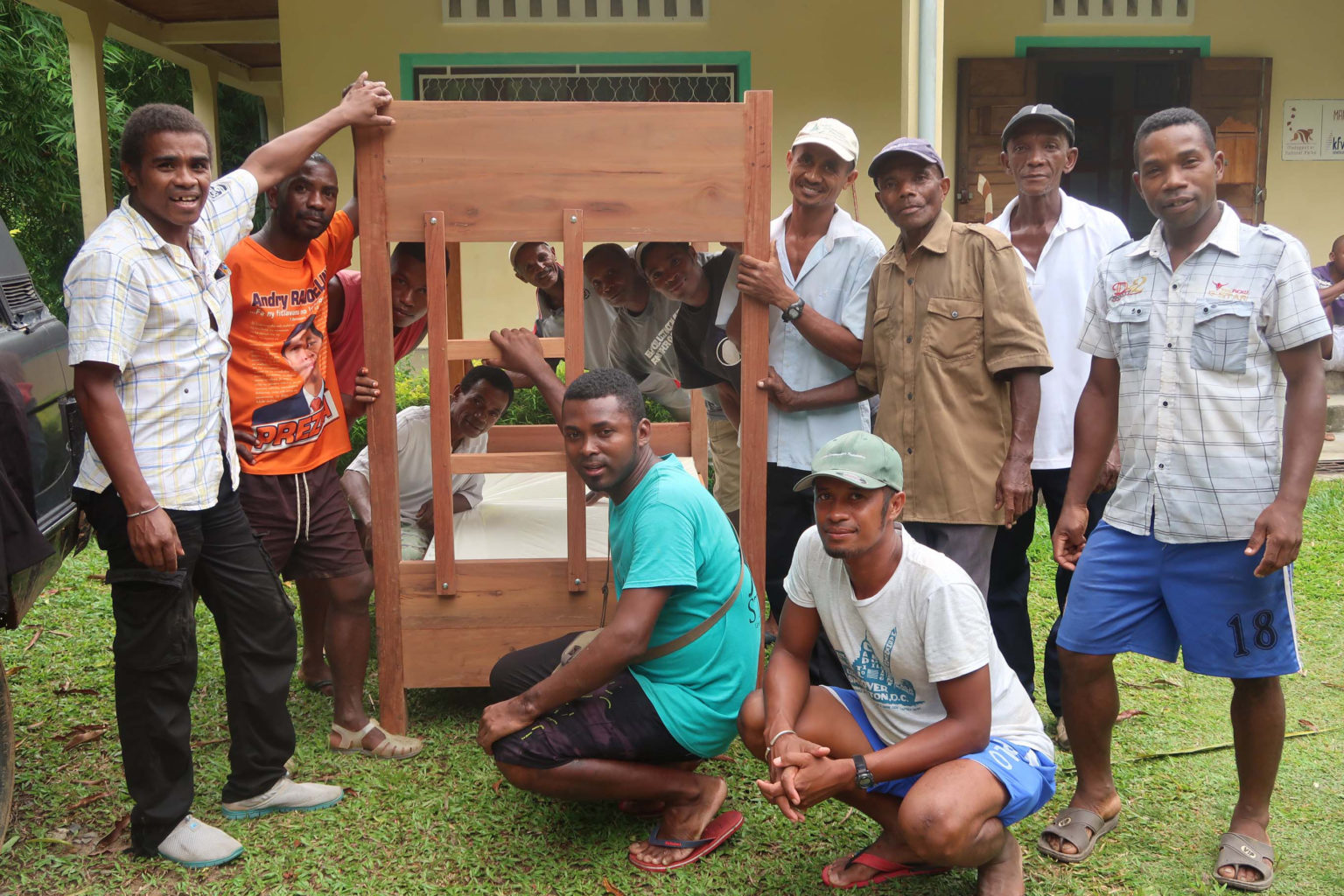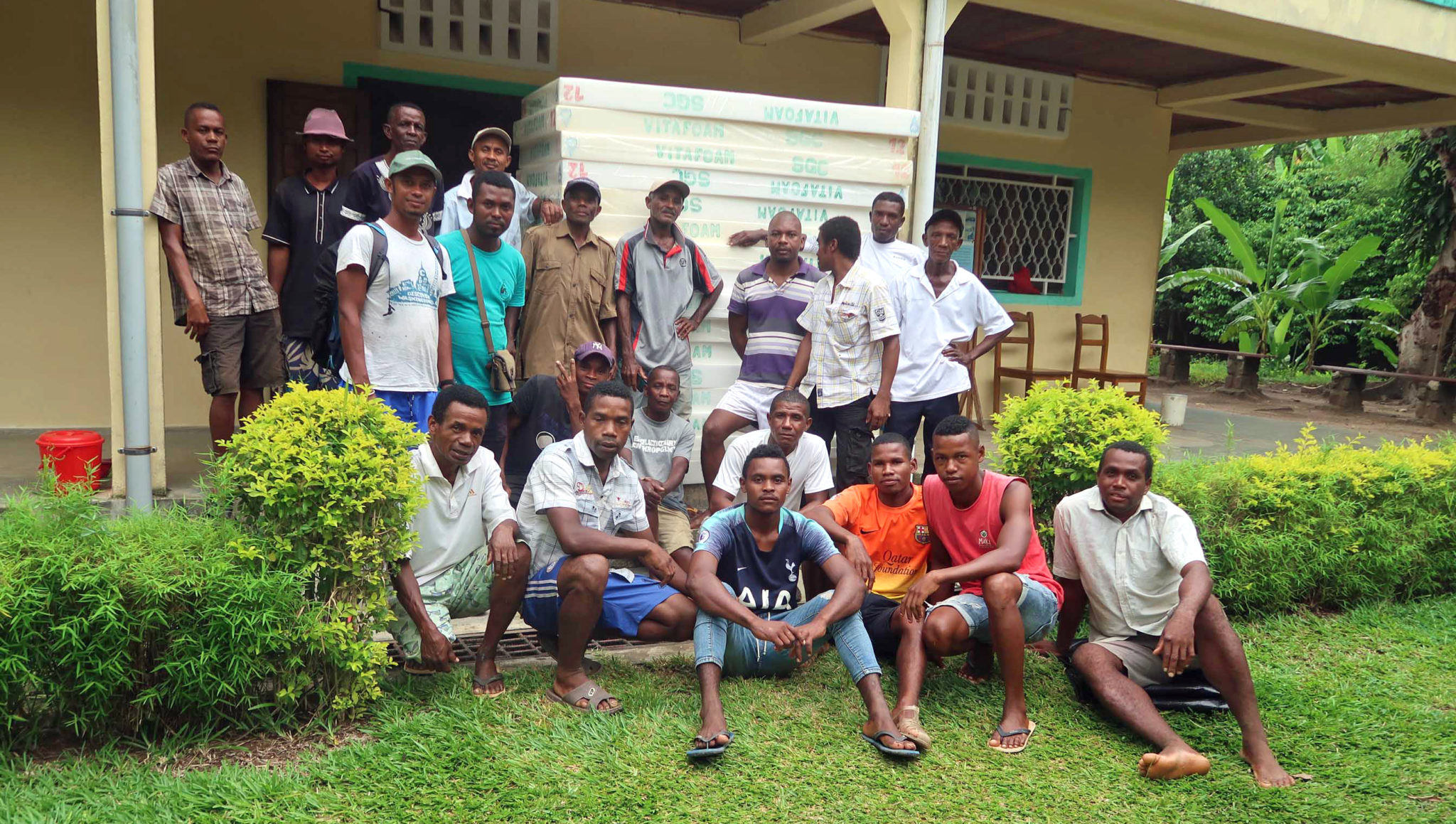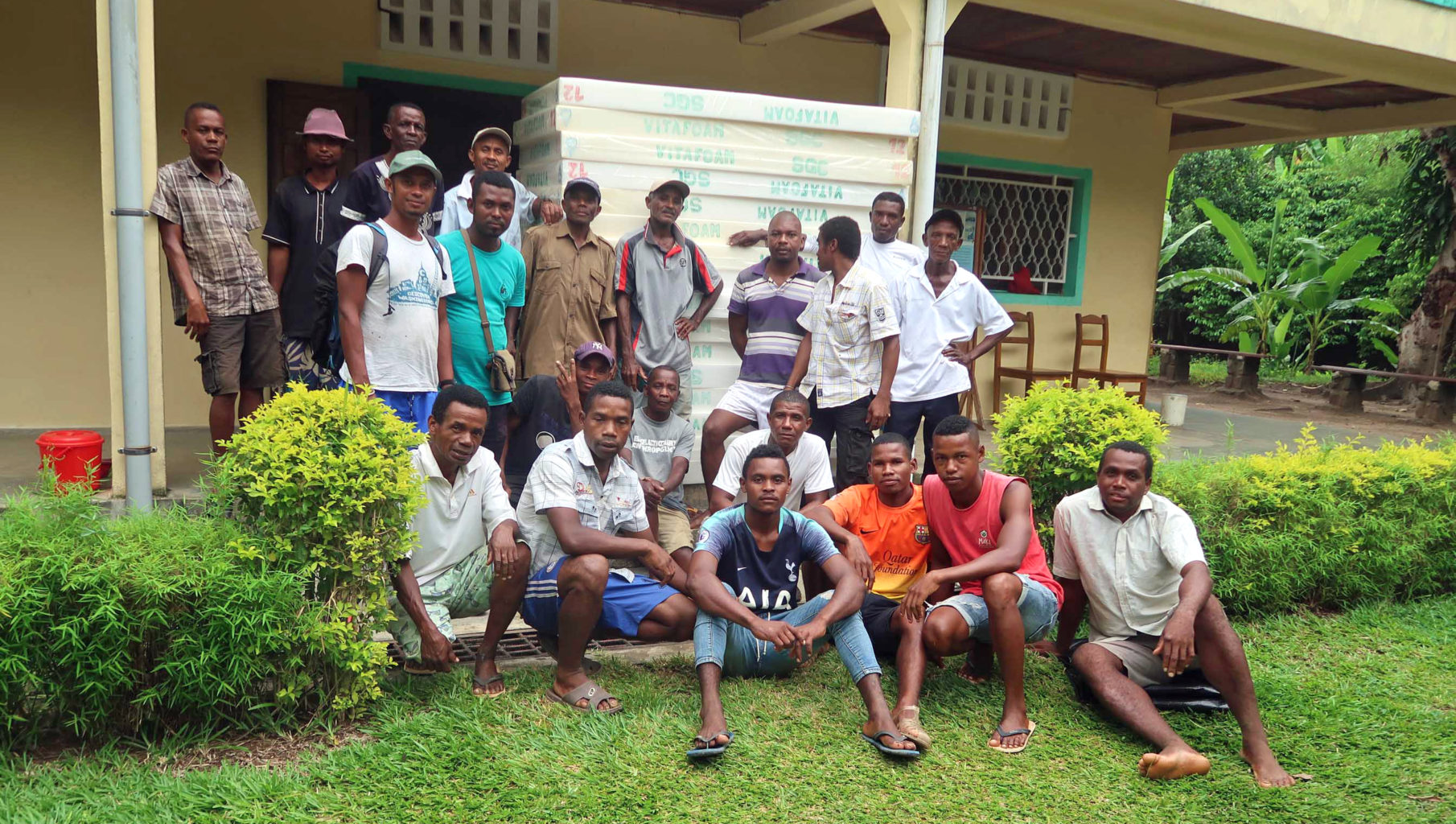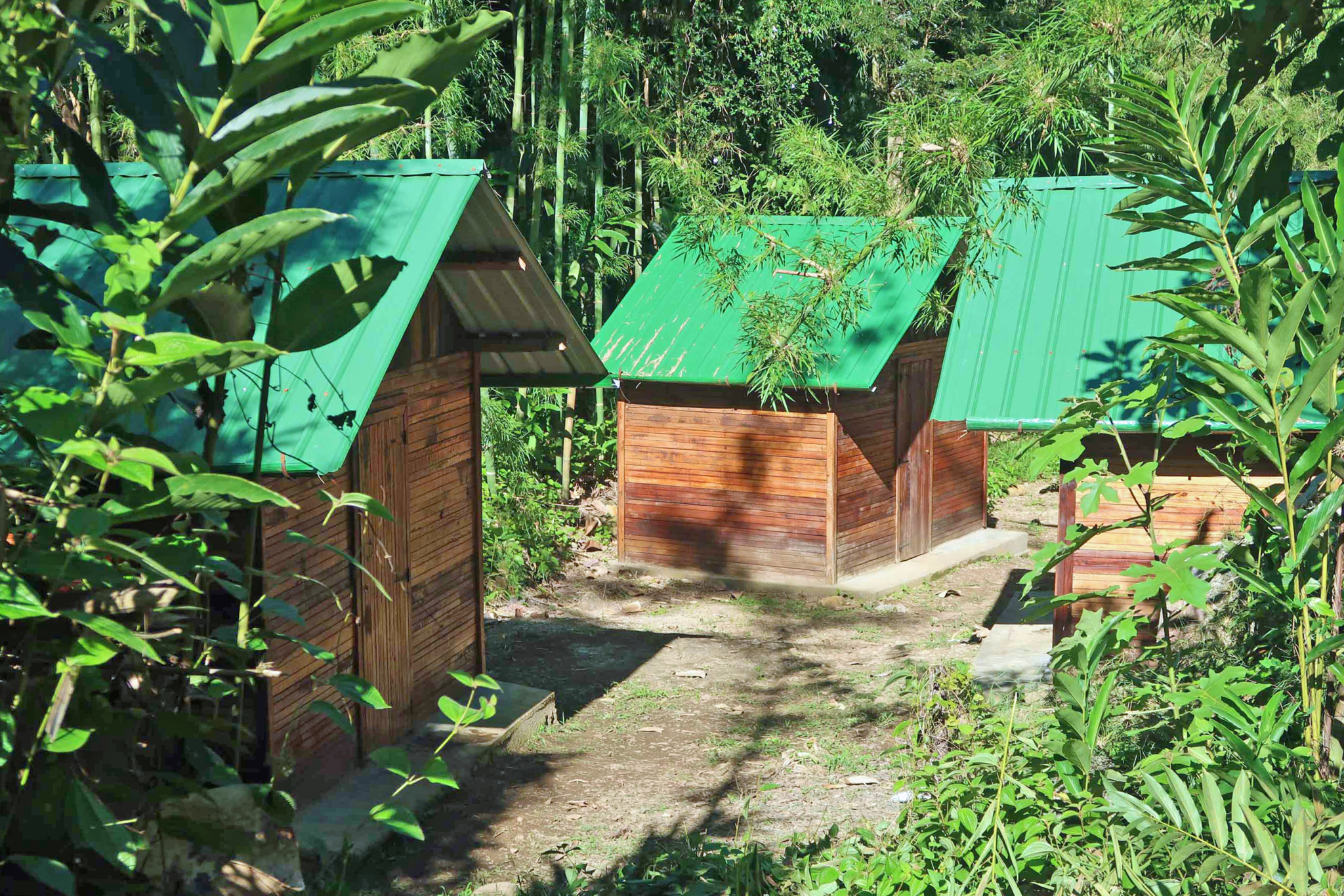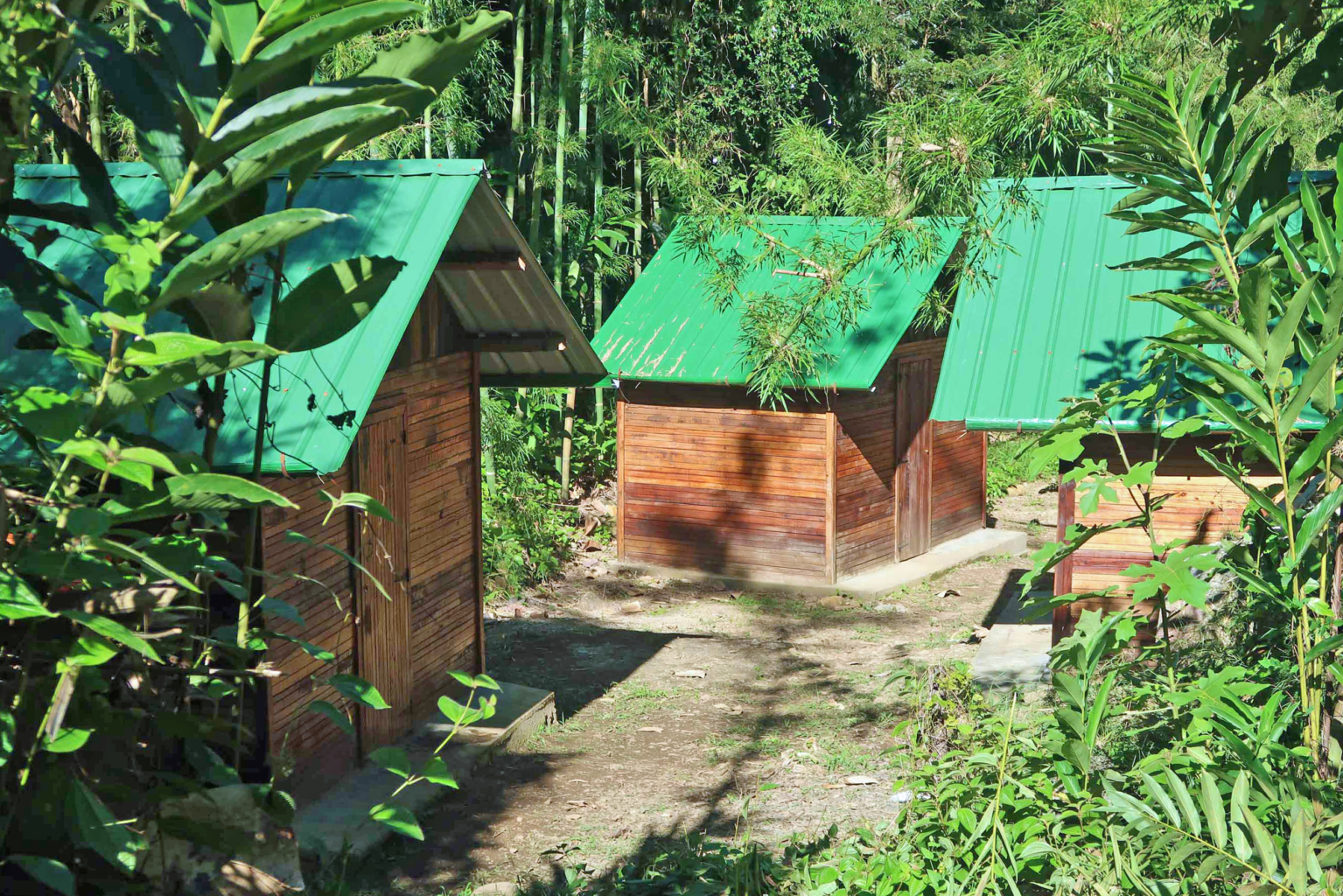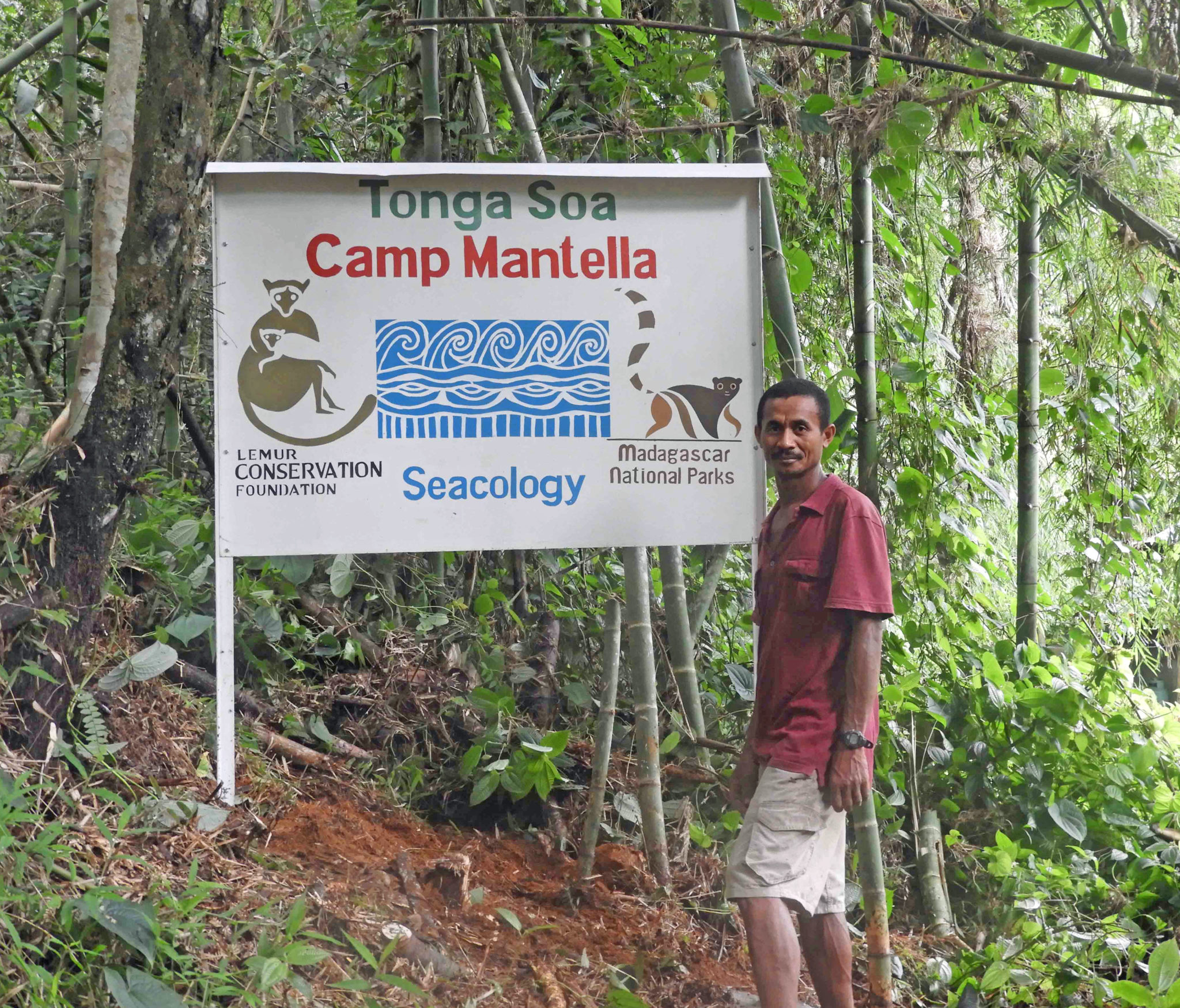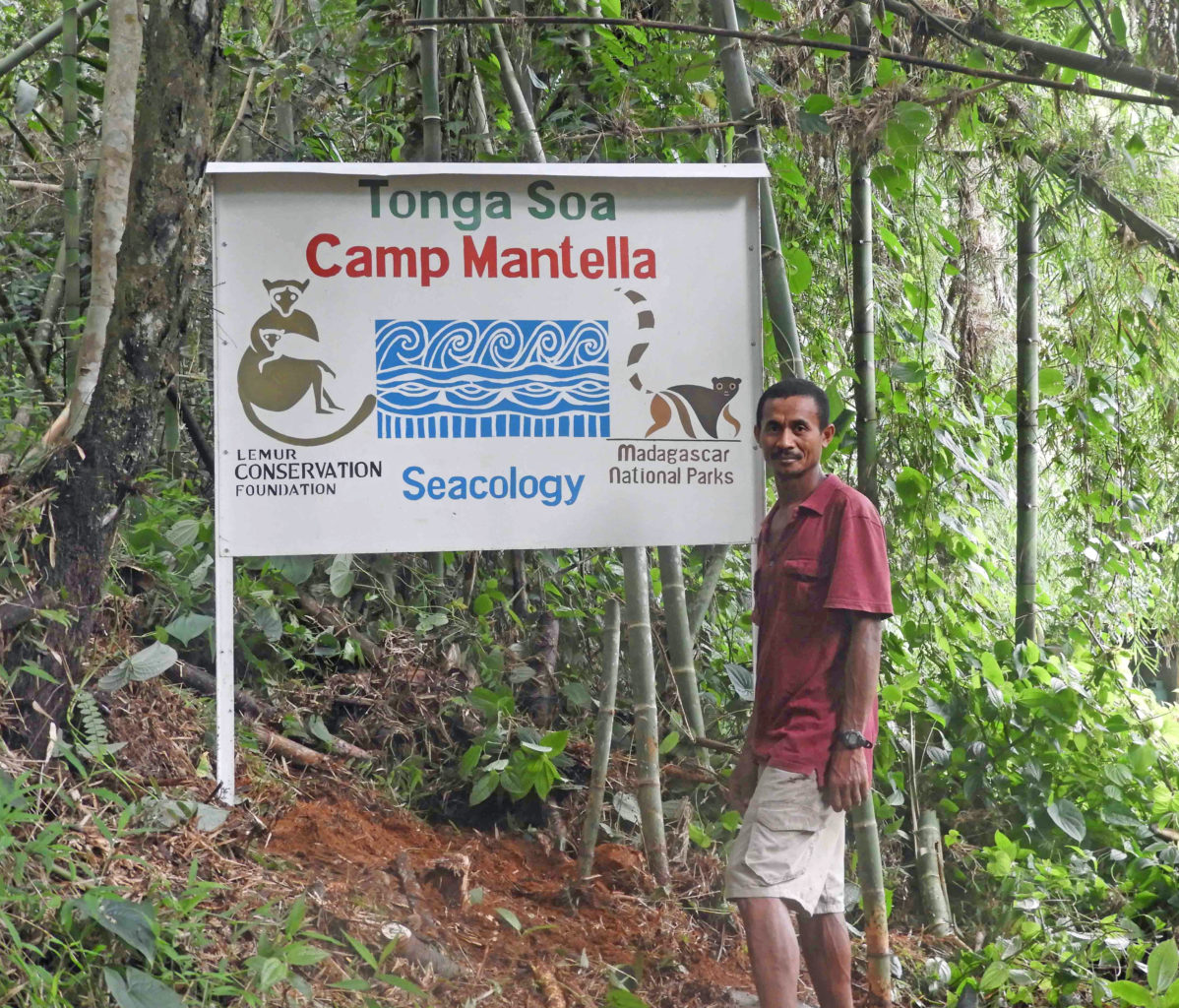“The United States have the Statue of Liberty, France has the Eiffel tower…. For us in Madagascar it is our biodiversity …”
These words were written by Professor Jonah Ratsimbazafy, one of a group of scientists urging Madagascar’s government to act swiftly to stop the country’s calamitous loss of habitat. An astounding 89% of Madagascar’s plants are found nowhere else; the same is true for 92% of its mammal species, including the iconic lemurs.
This project addresses the threat to Marojejy National Park, a World Heritage Site that is home to at least 10 species of lemurs, including the silky sifaka, one of the rarest primates in the world. About 90% of the park is primary forest. There are hundreds of species of birds, reptiles and amphibians, and some of the last stands of ancient rosewood trees. But people have been clearing trees for timber or to grow rice—and even moving park boundary markers to make it appear that more land is available for farming.
Combating these threats, according to a plan developed by biologists to save lemurs in the wild, requires a two-pronged approach: Increase ecotourism, and step up enforcement. This project does both.
Tourism helps in two powerful ways. First, the mere presence of tourists scares away illegal loggers. Second, it lets local people make good money as housekeepers, porters, and guides, supporting their families without damaging the forest. This is crucial in Madagascar, which is one of the world’s poorest countries.
The number of visitors to this part of Marojejy, however, dropped as the tourist camps slid into disrepair. This project will fund repairs to the bungalows and restrooms in the most popular camp.
Forest patrols will also increase. Right now, Madagascar National Parks does not have the resources to conduct substantial monitoring in this large, mountainous park. Villagers reported recent illegal logging, which resulted in arrests. They have agreed to conduct regular patrols, with equipment (GPS, camping gear, cameras) provided by the Lemur Conservation Foundation.


